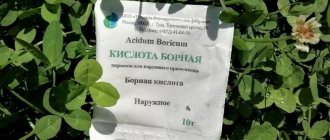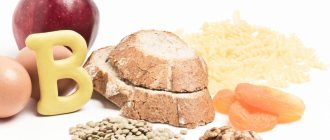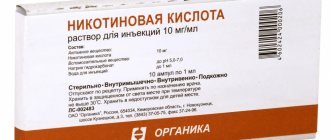pharmachologic effect
The active component is an endogenous antioxidant that is capable of binding aggressive free radicals. Alpha lipoic acid acts as a coenzyme in the transformation of substances that have pronounced antioxidant effects.
Such substances are able to exhibit protective, protective functions in relation to cells, protecting them from the aggressive effects of reactive radicals that are formed during intermediate metabolism, or at the time of the breakdown of foreign exogenous substances (including heavy metals).
The active substance is involved in the mitochondrial metabolism of substances inside the cell. By stimulating the utilization of glucose, thioctic acid is capable of synergizing with insulin . In patients with diabetes mellitus, changes in the level of pyruvic acid concentration in the blood are recorded.
According to the mechanism and nature of the biochemical effect, the active substance is similar to B vitamins . The active substance has a lipotropic effect, which manifests itself in accelerating the utilization processes of lipids in the hepatic system. Lipoic acid can stimulate the transfer of fatty acids from the liver system to various tissues in the body.
The nature of the drug is a detoxification effect when salts of heavy metals enter the body and in case of other poisoning. Thioctic acid changes cholesterol metabolism, improves the general and functional condition of the liver.
Unique "undervitamin"
It is known to the world under many names. The most common is lipoic acid. Analogue names: thioctic acid (international name), thioctacid, lipoate, berlithion, lipamide, para-aminobenzoic, alpha-lipoic acid, vitamin N. Regarding the last name, thioctacid is not a “full-fledged” vitamin, but rather a vitamin-like substance with similar properties B vitamins. Lipoic acid cannot be classified as a true vitamin precisely because of its unique abilities. Last but not least, due to its ability to be synthesized by the body itself (in the intestines).
Content:
- Unique "undervitamin"
- The more carbohydrates, the less vitamin N
- Useful acid
- Why does vitamin N deficiency occur and why is it dangerous?
- How to understand that there are already too many vitamins
- "Acid" dosages
- Food Sources of Vitamin N
- How to preserve maximum nutrition in food
- Interaction with other substances: benefits and harms
- Vitamin for sports
- The main defender of the liver...
- Vitamin for obesity
- How to lose weight with lipoic acid
- For pregnant
- Use in cosmetology
- The Latest Discovery About Vitamin N
On the other hand, while the “colleagues” of vitamin N are divided into separate groups - fat- and water-soluble, for lipoic acid there is no fundamental difference where to manifest itself: in fat, alcohol or water (acid salts react more quickly).
This natural antioxidant with universal properties is able to “make its way” into any cells of the human body, including the brain and blood vessels, and only there to fight the main pests - free radicals. Multiple experiments have proven the ability of thioctacid to protect DNA from damage. But it is precisely the violation of the structure of deoxyribonucleic acid that is called the main cause of aging of the body and the cessation of its viability.
Scientific experiments involving lipoic acid are ongoing. It is possible that the world is on the verge of the main discovery of all times - the elixir of eternal youth.
The unusual formula of vitamin N - a combination of fatty acid and sulfur - is capable of other “miracles”. Being an important element in the process of glycolysis, it converts sugar into energy. By enhancing the work of mitochondria, which play the role of “energy depots” in each cell, it affects the efficiency of the body, providing it with continuous sources of energy. And these mini-energy factories process “recyclables” - the breakdown products of amino acids, thus squeezing out the maximum benefit for the body.
It took scientists only a few years after the discovery of alpha-lipoic acid to learn how to synthesize the substance in the laboratory and determine that its structure is 1,2-dithiolane-3-valeric acid. The materials for the synthesis were beef liver and yeast. At the beginning of research, the substance was perceived as a hepatoprotector for the liver. But in the process of research, biochemists made a discovery: the entire human body is filled with substance N, it is in every cell. Then another equally important discovery: this powerful antioxidant performs the functions of insulin, lowering blood sugar levels. This made it possible to talk about lipoic acid as an effective medicine for diabetes.
In modern laboratories, two types of lipoic acid are “born”. Biochemists call them mirror isomers: R - right, S - left. The difference between the molecular compositions of both options is small, however, the human body agrees to fully accept only the R-sentence. But the synthesis of pure R-isomer is a rather expensive undertaking, so most pharmaceutical preparations with thioctic acid are a combination of left and right isomers in equal parts.
Indications for use of Lipoic acid
The medication is widely used in the treatment of liver pathology, the nervous system, alcoholism and intoxication, diabetes mellitus, and to alleviate the course of cancer.
Main indications:
- chronic hepatitis in the active phase;
- chronic pancreatitis due to alcoholism;
- chronic cholecystopancreatitis ;
- acute liver failure;
- intoxication with heavy metals, sleeping pills, carbon, carbon tetrachloride, mushrooms;
- viral hepatitis with increasing jaundice ;
- hepatic cirrhosis;
- diabetic polyneuritis;
- alcoholic polyneuropathy;
- poisoning with toadstool;
- fatty liver degeneration;
- dyslipidemia;
- coronary atherosclerosis .
During a course of treatment with Prednisolone, the medication acts as a corrector and synergist to prevent the development of “withdrawal syndrome” and gradually reduce the dose of glucocorticosteroid.
Lipoic acid for weight loss
The mechanism of action of the active substance allows the medication to be used to lose excess weight. The effect is more pronounced when simultaneously actively playing sports. Lipoic acid can trigger the fat burning mechanism, but it is not possible to burn absolutely all excess fat on its own, so intense physical activity is required.
Muscle tissue “attracts” nutrients during training, and thioctic acid can increase endurance, enhance fat burning and increase the overall effectiveness of physical activity. Simultaneous adherence to the diet allows you to achieve the greatest results.
Lipoic acid dosage for weight loss
Usually 50 mg of medication is sufficient. The minimum threshold is 25 mg. The most effective time to take the drug to achieve maximum results in the fight against excess weight:
- before or immediately after breakfast;
- at the last daily meal;
- after training, physical activity.
Reviews
The drug works well when following a diet and at the same time an active combination of exercises in the gym. On thematic forums, users discover a little secret: the drug works better when taking carbohydrate foods (semolina or buckwheat porridge, dates, honey, pasta, rice, peas, beans, bread products).
Lipoic acid in bodybuilding
Quite often in bodybuilding, thioctic acid is combined with levocarnitine ( Carnitine , L-carnitine ). This amino acid is a relative of B vitamins and can activate fat metabolism. Levocarnitine releases fat from cells, stimulating energy expenditure.
The more carbohydrates, the less vitamin N
Vitamin N reserves in the human body are replenished in several ways:
- in the process of synthesis;
- with food consumed;
- from dietary supplements.
Humans, like most living organisms, are capable of independently producing lipoic acid. The synthesis process occurs directly in the intestine with the participation of bile. True, the dose produced in this way is often not enough for the full operation of all systems, and with age this productivity fades away.
The second source of thioctacid is food. But the rule that works with other vitamins does not apply in the case of substance N again. Even a proper and balanced diet with foods rich in lipoid acid will not reveal the full potential of the substance. This paradox was explained by nutritional scientists: enzymes in the human body cannot fully break down alpha-lipoic acid to a state in which it is absorbed. So it turns out that once it enters the digestive system, a small part of the vitamin is absorbed, forming its own “depots” in the kidneys, liver and heart. The remains are excreted in the urine.
Carbohydrates can weaken the absorption of lipoic acid. There is a certain relationship between the two components: the richer the diet in carbohydrates, the less vitamin N the body absorbs.
This statement by scientists prompts another thought: how did people manage to live then until they learned to synthesize the substance in laboratories, and how those who do not take pharmaceutical forms of thioctacid continue to live today. There is no mystery in the explanation. A long and happy life without lipoic acid “shines” for absolutely healthy organisms, without metabolic problems, who do not suffer from diabetes and who have not accumulated free radicals. Today such conditions sound like fantasy. Bad habits, unhealthy lifestyle and poor environment have a detrimental effect on a person. And if a hundred years ago humanity could easily do without pharmaceutical analogues of vitamin N and live to a ripe old age in an active state, now not everyone can do this. And oncological diseases reaching epidemic levels and early decline of the body are, sadly, a normal situation for modern people.
Side effects
- diarrhea syndrome;
- epigastric pain;
- nausea;
- anaphylactic reactions;
- skin rashes;
- vomit;
- convulsions;
- increased intracranial pressure ;
- disorders of glucose metabolism ( hypoglycemia );
- migraine -type headache ;
- hives;
- itching;
- tendency to bleeding (with functional disorders of platelets );
- pinpoint hemorrhages;
- diplopia;
- difficulty breathing.
Lipoic acid, instructions for use (Method and dosage)
300-600 mg of thioctic acid is administered intravenously daily, which corresponds to 1-2 ampoules of 10 ml and 1 ampoule of 20 ml of concentration 3%. The duration of therapy is 2-4 weeks, after which treatment is continued in tablet form at a daily dose of 300-600 mg.
Instructions for use of Lipoic acid tablets
Orally 30 minutes before meals. Tablets should not be broken or chewed. Daily dose: 1 tablet 1 time per day (300-600 mg). The therapeutic effect is achieved by taking 600 mg per day. In the future, the dose can be halved.
For diseases of the liver system, tablets are prescribed: up to 4 times a day, 50 mg for a month. A repeat course can be carried out after 1 month.
Treatment of diabetic neuropathy and alcoholic polyneuropathy: begin with intravenous injections with the transition to a tablet form of 600 mg per day.
Lipoic acid 25 mg
Lipoic acid
Registration number and date: РN 001574/01 dated 05/10/2007
Trade name of the drug: Lipoic acid
International nonproprietary name: thioctic acid Dosage form: film-coated tablets
Compound:
Active substance:
Lipoic acid (thioctic acid) -12 mg and 25 mg
Excipients: sugar (sucrose), glucose (dextrose), potato starch, calcium stearate 1-water (calcium stearate monohydrate), stearic acid, talc (magnesium hydrosilicate).
Excipients of the shell: aerosil (colloidal silicon dioxide), beeswax, titanium dioxide, basic magnesium carbonate (magnesium hydroxycarbonate), vaseline oil, low molecular weight medical polyvinylpyrrolidone (povidone), sugar (sucrose), talc (magnesium hydrosilicate), quinoline yellow dye E -104.
Description
Yellow or greenish-yellow film-coated tablets.
The cross section shows two layers.
Pharmacotherapeutic group: metabolic agent.
ATX code : [A05BA].
pharmachologic effect
Lipoic acid is a coenzyme involved in the oxidative decarboxylation of pyruvic acid and alpha-keto acids and plays an important role in the body's energy balance. By the nature of its biochemical action, thioctic acid is similar to B vitamins. It participates in the regulation of lipid and carbohydrate metabolism, has a lipotropic effect, affects cholesterol metabolism, improves liver function, and has a detoxification effect in case of poisoning with heavy metal salts and other intoxications.
Indications for use
Fatty liver, liver cirrhosis, chronic hepatitis, hepatitis A, intoxication (including salts of heavy metals, toadstool), hyperlipidemia.
Contraindications
Hypersensitivity, lactation period, children's age (up to 6 years).
With caution - pregnancy
Directions for use and doses
Inside after meals. Adults - 50 mg 3-4 times a day.
Children over 6 years old - 12-24 mg 2-3 times a day.
The duration of treatment is 20-30 days. If necessary, as prescribed by a doctor, a second course of treatment is carried out after 1 month.
Side effect
Dyspepsia (including nausea, heartburn, vomiting, diarrhea, abdominal pain), allergic reactions (including urticaria, skin rash, itching and systemic allergic reactions up to anaphylactic shock), hypoglycemia.
Interaction with other drugs
Strengthens the anti-inflammatory effect of glucocorticosteroids. Reduces the effectiveness of cisplatin. Enhances the effect of insulin and oral hypoglycemic agents. Binds metals, so should not be taken simultaneously with drugs containing metal ions (iron, calcium magnesium); the interval between doses should be at least 2 hours. Ethanol and its metabolites weaken the effect of lipoic acid.
special instructions
During the treatment period, regular monitoring of glucose concentrations (especially at the beginning of therapy) in patients with diabetes mellitus is necessary; you should refrain from drinking alcohol.
Release form
Film-coated tablets 12 mg and 25 mg.
10 tablets per blister pack.
50, 100 tablets in glass jars or polymer jars.
Each jar or 5 blister packs along with instructions for use are placed in a pack.
Conditions for dispensing from pharmacies
On prescription.
Storage conditions:
In a dry place, protected from light, at a temperature not exceeding 25°C.
Best before date:
3 years. Do not use after the expiration date stated on the package.
Units:
pack
Interaction
The medication can enhance the effects of glucocorticosteroid drugs. Suppression of the activity of Cisplatin . The drug enhances the effect of hypoglycemic agents (oral forms) and insulin.
It is not recommended to use with medications that contain metal ions (calcium, magnesium, iron) due to the ability of lipoic acid to bind metals.
If there is an urgent need to use drugs, it is recommended to maintain a certain time interval (at least 2 hours). Ethanol metabolites and ethanol itself weaken the effect of thioctic acid.
Benefit
The beneficial properties of lipoic acid are still being studied. To date, it has been found that this is a powerful antioxidant that slows down the aging process in the body and suppresses the formation of free radicals. It is able to penetrate every cell of the body and protect them from radical damage and, as a result, from various pathologies. The substance enhances the antioxidant effect of vitamin C, E and coenzyme Q10. Thanks to this property, lipoate has a beneficial effect on the body:
Preparations with lipoic acid are prescribed to people with diabetes. It has been proven that the substance reduces the need of body cells for glucose and increases their susceptibility to it. It also helps maintain normal blood glucose levels.
Athletes and people who frequently exercise take this drug as it improves metabolism and helps build muscle mass. When combined with intense training, lipoate helps you burn fat faster and release more energy, thereby helping you achieve your desired shape.
If you don’t want to build up muscles, but want to reduce volume and lose weight, then you should take the drug according to a certain regimen, which should be prescribed by your doctor. Due to the fact that lipoate improves metabolism, it is able to increase the digestibility of carbohydrates and prevent them from being deposited in excess fat on the body.
Lipoic acid is important in the treatment of liver diseases. It is prescribed for viral hepatitis B and C, cirrhosis and fatty liver, liver failure, non-alcoholic steatohepatitis. The drug improves the functioning of the organ, inhibits the development of fibrosis and malignant tumors, thanks to its antioxidant properties, normalizes fat metabolism in liver cells and stops inflammatory processes.
Lipoate improves body tone and prevents the development of many aging diseases, including Parkinson's, Alzheimer's, dementia, etc. The drug is prescribed for chronic fatigue, stress, decreased memory and attention. The drug is also able to prevent glaucoma and cataracts, which develop mainly in old age.
The substance is able to bind heavy metal salts and remove them from the body. Therefore, its use is prescribed for severe intoxication of the body, including alcohol and drugs.
Lipoic acid is similar in effect and structure to vitamin B, so it is often prescribed for diseases of the nervous system and cardiovascular pathologies. It helps normalize blood pressure, improve vascular permeability, and eliminate numbness in the limbs.
Harm
There is no need to think that this antioxidant will not cause any harm to the body. If you take the drug incorrectly or use it excessively, the following side effects are possible:
Heartburn, stomach or intestinal upsets, nausea, skin rash, itchy skin; in severe cases, anaphylactic shock is possible.
A sharp drop in blood glucose levels. Therefore, persons suffering from diabetes should under no circumstances violate the drug dosage regimen and take it only under the supervision of a doctor.
Lipoate reduces the effectiveness of chemotherapy, so it is not recommended to combine them.
If you have problems with the thyroid gland and hormonal imbalance, you should use the substance with caution, as it can negatively affect hormonal levels.
Long-term use of the drug for peptic ulcers and gastritis can aggravate the problem. Also, for any other chronic diseases, long-term use is agreed with the doctor.
special instructions
The main metabolic pathways are oxidation and conjugation.
Benefits and harms
Lipoic acid is a natural antioxidant and vitamin. It helps normalize and accelerate metabolic processes, stimulates the pancreas, removes toxins from the body, lowers blood sugar levels, improves visual perception, has a beneficial effect on heart function, lowers cholesterol , and helps normalize blood pressure.
With the use of Lipoic acid, there is a decrease in the severity of negative reactions that occur after chemotherapy in cancer patients.
The drug has a beneficial effect on the condition of nerve endings damaged as a result of diabetes. Rarely do negative reactions occur during the use of the medication.
Vitamin for sports
It is generally accepted that women are more interested in the benefits of vitamins and minerals. They, beauties and caring mothers, are destined by their “status” to be aware of everything that has a positive effect on the beauty and health of the family. This is only a half-truth. Information about the benefits of vitamins and microelements is just as important for men, especially those who see themselves in sports and, in particular, in bodybuilding. For them, who regularly lose energy in the gym, it is especially important to know what microelements and how to take them to gain muscle mass.
Athletes know that vitamin N is the “king” among useful substances. Under its influence, fat melts before our eyes, and muscles gain mass day after day. And at the same time - no feeling of fatigue or weakness.
The rate of lipoic acid intake for athletes may vary depending on the load and type of training.
Speed-strength exercises require 100-200 mg of vitamin N per day. During competitions – 150-250 mg daily. Endurance training includes a vitamin menu of 400-500 mg, during competitions - 450-600 mg/day.
In some cases, the intake of lipoic acid is determined by a specially designed program. In this case, at the initial stage, you should drink vitamin N in doses not exceeding 100-200 mg/day, eventually increasing to 400-600 mg per day. The daily portion should be divided into equal shares and drunk three times a day. But sports nutritionists do not recommend going beyond the 600-milligram maximum. This is the upper limit of the vitamin portion for athletes. Increasing this dose will not have any effect on either fat burning or muscle building.
Sometimes the question arises as to what can replace vitamin N in a sports diet. Conjugated linoleic acid is similar in the principles of its effect on the body of athletes. It, being nothing more than a partially modified form of lipoic acid, also regulates the ratio of fat and muscle tissue, reducing sebaceous deposits on the abdomen and enhancing muscle growth.
Similar drugs
Level 4 ATX code matches:
Verona
Phibs
Gastrikumel
Fitogastrol
Thyroidea Compositum
Berlition
Thiolepta
Gastric collection
Espa-Lipon
Brewer's yeast
Rosehip syrup
Octolipen
Thioctacid
Thiogamma
Figurin
Preparations containing thioctic acid:
- Berlition
- Thiolepta
- Octolipen
- Thioctacid
- Tiogram
- Alfa-Lipon
- Espa-Lipon
Lipoic acid reviews
The medication is well tolerated and has proven itself as an effective drug for intoxication, poisoning, and diseases of the liver system.
Reviews of Lipoic acid for weight loss
There are a variety of reviews. Some felt absolutely no effect, maintaining their weight despite regularly taking the medication. Some users note that taking Lipoic acid in combination with intense cardio exercise and following a certain diet can significantly reduce weight without harming their health.
Patients suffering from diabetes mellitus note that the medication can reduce the severity of negative reactions of hypoglycemic drugs (in some cases it was possible to reduce the dosage) and improve overall well-being.
"Acid" dosages
As is the case with some other beneficial substances, scientific minds cannot agree on what the daily dose of lipoic acid should be.
Therefore, the concept of “norm” was pushed into the framework between half a milligram and 30 mg. In some cases, the upper bar is raised to 50-80 mg, and in exceptional cases – to 800 mg/day. However, the most common recommended dose for adults is 25-50 mg daily. Comparative table of consumption rates
| For whom | Daily norm |
| Children 1-7 years old | 1-13 mg |
| Children 7-16 years old | 13-25 mg |
| Adults | 25-30 mg |
| Pregnant and nursing mothers | 45-70 mg |
This norm “works” for healthy people leading a normal lifestyle. In other cases, the dosage is adjusted according to the body's requirements. Increased daily norms cannot be taken for longer than the recommended period - the body is able to “get hooked” on artificial “feeding” and eventually abandon its own production of the substance. Also, you should not buy vitamin N for children unless necessary, especially for infants. Babies will receive everything they need from their mother’s milk, while older ones will receive everything they need from their daily food.
A higher daily dose of lipoic acid is needed:
- people who play sports professionally (their norm reaches 100-200 mg of thioctacid);
- whose work involves contact with poisons and radioactive substances;
- pregnant women and women during lactation (but only under the supervision of a doctor);
- after severe nervous disorders, stress;
- when consuming large amounts of proteins;
- spending a lot of time in cold rooms or outside in winter;
- diabetics (consume 400 mg of alpha lipoic acid per day);
- those engaged in active mental work or for the prevention of neurodegenerative disorders (up to 600 mg);
- for obesity (maximum dose 1800 mg/day).
When determining your own daily intake of lipoic acid, you need to remember that there are two isomers of thioctacid - right and left. The dosage indicated above is based on preparations containing equally two versions of laboratory acid. The dose of drugs containing exclusively the R-isomer is automatically divided into 2.
And further. In any case, the parallel use of lipoic acid and alcohol is strictly prohibited.
The interval between eating and taking the drug is at least an hour. For medicinal purposes, the course of treatment is at least 8 weeks. There is no need to “prescribe” yourself a vitamin for prevention, for heart disease, fractures, colds or other health problems without consulting a doctor.
Lipoic acid price, where to buy
Most often, the drug is purchased for weight loss. You can buy Lipoic acid in a pharmacy in Russia for about 100 rubles.
The price of Lipoic acid in Ukraine is about 100 UAH.
- Online pharmacies in RussiaRussia
- Online pharmacies in UkraineUkraine
Pharmacy Dialogue
- Lipoic acid Vitamir tablets No. 30 Square C
85 rub. order
show more







